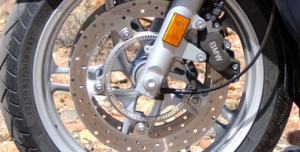The early 80s saw a lot of advancements in the field of automotive engineering, mostly concerned with safety during driving and to make the driving a lot easier during adverse conditions. As a result a chain of new safety features came out namely ABS (Anti-Lock Braking system), TCS (Traction Control system) and ESP (Electronic Stability Program), listed in chronological order. A part of credit for their development also goes to growth and innovation in microcontrollers and sensors field. Let’s have a look at one of these revolutionary technologies, the TCS.
Basics of Automobile Traction Control Systems (TCS)
Traction refers to friction caused due to interaction or contact made by tires with the ground. It can be braking traction, cornering traction or accelerating traction. The meaning remains same though the values and application changes. TCS is used mainly for traction control during acceleration.
As we know that traction is a must to move the car. The more the traction the more fast the car will move based on the power output of the engine.

Application of Traction Control System
Now let’s consider a scenario, you are driving on a wet road at full throttle, suddenly your rear left wheel starts spinning which means there’s a loss of traction there hence the power supplied by the engine is not being utilized to move the vehicle, while the rear right wheel is running as per the desired RPM for the power output. This presents a dreadful situation due to loss of traction the vehicle will drift towards the side with more grip or traction and hence you move sideways on a straight road resulting in crash.
Had you had a TCS installed in your vehicle, the whole scenario would change. The sensor at the rear left wheel would sense the unusual high rotation and will send out a signal to control unit which would then apply brakes to stop the wheel from spinning and/or lower the power delivered to the wheel. Now when this happens the free spinning wheel gains some traction or hold on the road and you stay right on your course without undesired drifting. This whole process happens within fraction of seconds and helps in achieving better control of the tires on the road.
A TCS comprises of three components mainly –
RPM Sensors (mounted on each wheel for individual monitoring)
A Control unit to coordinate between the sensor signal and throttle input
A electronic drive-by-wire Throttle connection instead of mechanical cable
Whenever the sensor senses unusual rotation at the wheel is sends the signal to control unit which checks for wheel spin and actuates electronic intermittent braking to lower the rotation of the wheel and also reduces throttle input so as to reduce power delivered to wheels. At low RPM the wheel regains traction and hence the car stays on track.
